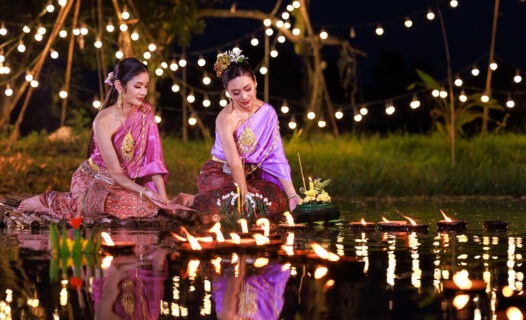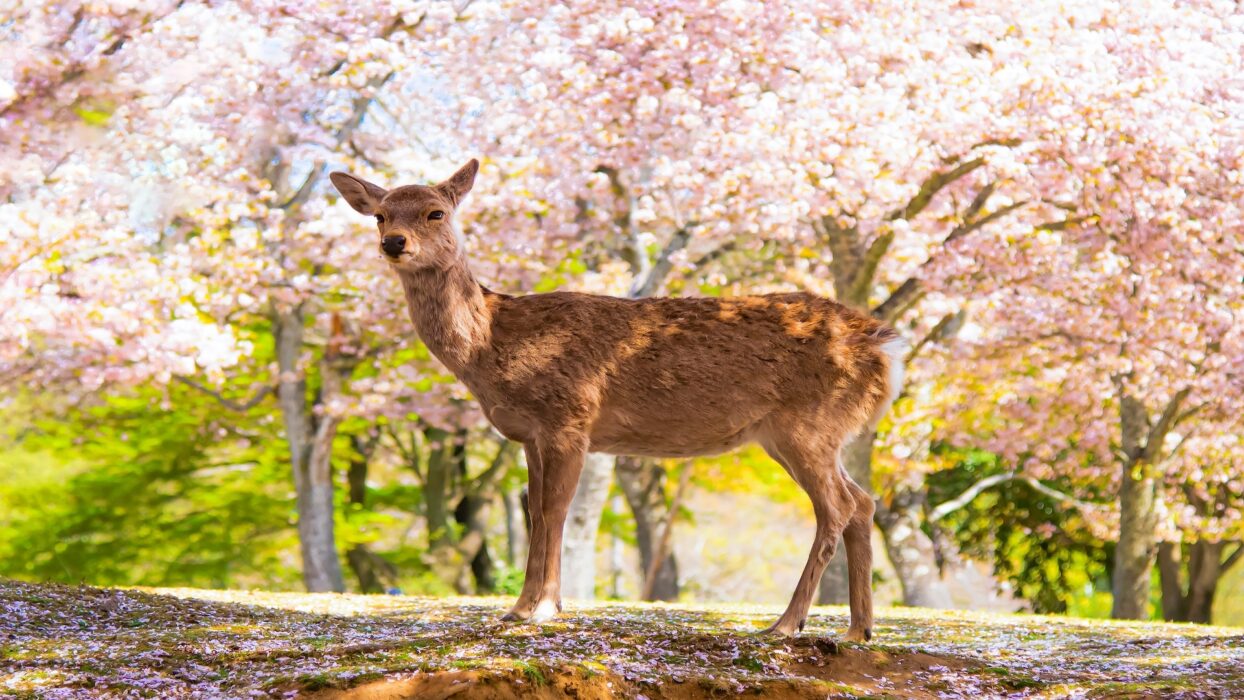Welcome to Nara: A Cultural Wonderland
Nara, the ancient capital of Japan, is a treasure trove of cultural and historical wonders just waiting to be explored. With its stunning temples, serene shrines, and friendly deer roaming freely in the parks, Nara offers a unique blend of spirituality and nature that captivates every traveler. Whether you’re a history buff, a nature lover, or simply seeking a peaceful escape, this Nara travel guide will help you uncover the best of what this enchanting city has to offer.
Imagine wandering through lush landscapes, surrounded by the majestic architecture of ancient temples, and encountering the gentle deer that have become synonymous with the city. Each step in Nara is an invitation to immerse yourself in Japan’s rich cultural experiences, making it a must-visit destination for anyone looking to connect with history and nature. Get ready to hop from temple to temple, making unforgettable memories along the way!
Temple Hopping: A Unique Cultural Experience
One of the most delightful activities in Nara is temple hopping, where each temple tells its own story steeped in tradition and history. The significance of these sacred sites extends beyond their stunning architecture; they are places where visitors can reflect, meditate, and connect with Japan’s spiritual heritage. From the towering pagodas to the intricate details of the shrines, Nara’s temples are a feast for the eyes and the soul.
As you explore the Nara temples, you’ll find that each location offers a unique atmosphere, inviting you to slow down and appreciate the beauty around you. The emotional connections formed through these cultural experiences are profound, allowing visitors to engage with local wildlife, particularly the friendly deer that roam freely in Nara Park. This blend of culture, history, and nature creates an unforgettable experience that resonates long after you leave.
Exploring Todai-ji Temple: The Great Buddha Hall
One of the highlights of any trip to Nara is visiting the iconic Todai-ji Temple, home to the Great Buddha Hall (Daibutsuden). This architectural marvel is not only a UNESCO World Heritage site but also houses one of the largest bronze Buddha statues in the world. Standing at an impressive 15 meters tall, the Great Buddha is a sight to behold and a symbol of Nara’s cultural heritage.
The temple’s history dates back to the 8th century, and its grand architecture showcases the artistry of the time. As you step inside, you’ll be enveloped in a sense of serenity, with the soft glow of sunlight filtering through the wooden beams. Don’t forget to look up at the intricate details of the ceiling, adorned with beautiful carvings that tell stories of the past.
Before you visit, here’s some essential information: Todai-ji Temple is open daily from 7:30 AM to 5:30 PM, with ticket prices around 600 yen for adults. Accessibility is quite good, with ramps and pathways for those with mobility challenges. Be sure to take your time, as the experience of standing before the Great Buddha is truly awe-inspiring.
For more insights on Nara’s temples, check out A Guide to the Temples and Buddhist Images of Nara.
Kasuga-taisha Shrine: A Spiritual Oasis
Next on your temple hopping adventure is the enchanting Kasuga-taisha Shrine. This shrine is famous for its hundreds of stone lanterns that line the paths leading to the main hall, creating a magical atmosphere, especially during the lantern festivals held throughout the year. The shrine is dedicated to the deity of the Fujiwara clan and is surrounded by a lush forest that adds to its serene ambiance.
Visitors can participate in various rituals and festivals, which offer a deeper understanding of the local traditions. The annual lantern lighting ceremony is a must-see, as the soft glow of the lanterns against the backdrop of the shrine creates a mesmerizing sight. It’s the perfect opportunity for reflection and photography, capturing the essence of Nara’s spiritual heritage.
As you stroll through the grounds, take a moment to appreciate the tranquility of the forest surrounding the shrine, where deer often wander, adding to the enchanting atmosphere. The peacefulness of Kasuga-taisha Shrine provides a beautiful contrast to the bustling city life, making it a perfect spot for some quiet contemplation.
For more details on local rituals and events, visit Discover Todaiji Temple Nara: Festivals & Fun Awaits!.
Nara Park: A Natural Wonderland
No trip to Nara would be complete without a visit to Nara Park, a sprawling green oasis that is home to over 1,200 free-roaming deer. These gentle creatures are considered messengers of the gods in Shinto, and they have become an integral part of the Nara experience. As you wander through the park, you’ll have the chance to interact with the deer, feeding them special crackers known as shika senbei. Just be sure to follow park etiquette and treat these lovely animals with respect!
The park is not just a haven for deer; it also boasts beautiful landscapes, serene ponds, and stunning views of the surrounding mountains. It’s a perfect spot for picnicking, photography, or simply enjoying a leisurely stroll. The combination of nature and wildlife creates a sense of harmony that is truly refreshing.
Personal encounters with the deer are often the highlight of visitors’ experiences in Nara. Imagine the joy of having a curious deer approach you, gently nudging your hand for a treat! Such moments create lasting memories and a deeper connection to the natural world.
For a more in-depth exploration of Nara Park, check out Discover the Magic of Nara Park: A Complete Travel Guide.
A Day in Nara: Your Perfect Itinerary for Temple Hopping
Ready to explore Nara like a pro? Here’s a fun-filled itinerary that will take you through the best temples, parks, and attractions this cultural gem has to offer, all in one day! Grab your walking shoes and let’s hit the ground running!
Morning: Start with Todai-ji Temple
Your adventure begins at Todai-ji Temple. Aim to arrive early to beat the crowds and soak in the serenity of this magnificent site. Spend about 1.5 to 2 hours here. Don’t rush—take your time to admire the Great Buddha Hall and the intricate details of the temple’s architecture. Snap some photos and enjoy the peaceful ambiance.
Late Morning: Stroll Through Nara Park
After soaking in the sights of Todai-ji, make your way to Nara Park, which is just a short walk away. Spend about an hour here interacting with the friendly deer. Remember to grab some shika senbei (deer crackers) from one of the vendors. The joy of feeding these adorable creatures is an experience you won’t want to miss!
Lunch: Local Delights Near Nara Park
Feeling hungry? There are plenty of eateries near Nara Park. Try out some local dishes like kakinoha-zushi (sushi wrapped in persimmon leaves) or chagayu (tea porridge). A cozy spot to consider is Nara Local Food, where you can sit back and enjoy a delicious meal while reflecting on your morning adventures.
Afternoon: Explore Kasuga-taisha Shrine
Post-lunch, make your way to Kasuga-taisha Shrine. Allocate about 1 to 1.5 hours to explore the shrine and its beautiful surroundings. The paths lined with stone lanterns create a magical atmosphere that’s perfect for photography. If you’re lucky, you might catch a traditional ceremony or festival happening during your visit!
Evening: Wind Down and Reflect
As the sun starts to set, take a leisurely stroll back through Nara Park. The deer are often more active during this time, and the golden hour light makes for stunning photographs. Spend some time reflecting on your day, perhaps finding a quiet spot to sit and take it all in.
Culinary Delights: Local Food to Try in Nara
Nara isn’t just a feast for the eyes; it’s also a paradise for food lovers! Here are some local dishes you absolutely must try during your visit:
Kakinoha-zushi
This sushi wrapped in persimmon leaves is a Nara specialty. The unique flavor of the leaves adds a delightful twist to the traditional sushi experience. You can find it at local markets or restaurants around Nara Park.
Chagayu
Warm and comforting, this tea porridge is perfect for a cozy lunch. It’s made using rice cooked in tea, giving it a subtle flavor that’s both soothing and satisfying. Many cafes near the temples offer this dish, so keep an eye out!
Nara Sake
Don’t forget to try some local sake! Nara has a rich sake brewing tradition, and tasting a glass is a great way to unwind after a day of exploring. Look for local breweries that offer tastings or guided tours.
Where to Eat
For a delightful meal, check out Nara Local Food for recommendations on the best eateries in the area. From cozy cafes to traditional restaurants, there’s something to satisfy every palate!
Festivals and Events: Celebrating Nara’s Culture
Nara is alive with culture, especially during its vibrant festivals! Here are some highlights you won’t want to miss:
Nara Tokae
Held in August, this enchanting festival involves thousands of lanterns lighting up the streets and temples of Nara. The atmosphere is magical, making it a perfect evening for a stroll. Don’t forget your camera!
Kasuga-taisha Lantern Festival
Every February and August, this festival sees the lanterns of Kasuga-taisha Shrine lit up, creating a breathtaking sight. Visitors can participate in rituals and enjoy traditional performances, immersing themselves in Nara’s cultural heritage.
Check local calendars for specific dates and details, as these events can enhance your temple hopping experience and provide a deeper connection to the local culture.
Practical Information for Travelers: Tips and Essentials
Before you head out, here are some essential tips to make your trip to Nara smooth and enjoyable:
Transportation
Nara is easily accessible from Kyoto and Osaka by train. The Kintetsu Nara Station is the closest to the main attractions, so plan your route accordingly. Once in Nara, most sites are within walking distance, making it easy to explore on foot.
Opening Hours
Most temples and shrines in Nara are open from around 7:30 AM to 5:30 PM, but it’s wise to check specific hours for each location, especially during holidays or festivals.
Accessibility
Nara is generally friendly for visitors with mobility challenges. Many temples and parks have ramps and accessible pathways. However, be prepared for some uneven terrain, especially in the parks.
Etiquette
When visiting temples and shrines, remember to be respectful. Take off your shoes when required, keep noise to a minimum, and refrain from touching sacred objects unless permitted. Interacting with the deer is a joy, but be sure to follow park rules and treat them kindly!
Seasonal Travel Insights: Best Times to Visit
Nara is beautiful year-round, but each season brings its own charm:
Spring: Cherry Blossoms
Spring is a magical time in Nara, with cherry blossoms blooming throughout the parks and temples. The sight of pink petals against ancient architecture is breathtaking. Don’t miss the hanami (flower viewing) picnics!
Autumn: Fiery Foliage
As the leaves turn vibrant shades of red and orange, Nara transforms into a picturesque landscape. Autumn foliage usually peaks in November, making it an ideal time for nature walks and photography.
Winter: A Quiet Retreat
Winter offers a tranquil experience, with fewer tourists. The temples dusted with snow create a serene atmosphere. Plus, you can enjoy seasonal food and local festivals!
Safety and Health Guidelines for Visitors
Your safety is important while enjoying the beauty of Nara! Here are some tips:
Wildlife Interactions
When interacting with the deer, approach them calmly and avoid sudden movements. Feeding them is a joy, but stick to the special crackers and avoid giving them human food.
Health Precautions
Stay hydrated, especially during warmer months, and wear sunscreen. If you plan to hike or walk a lot, comfortable shoes are a must!
Commonly Asked Questions (FAQs)
Here are some frequently asked questions about temple hopping in Nara:
What are the best routes for temple hopping in Nara?
The most popular route starts at Todai-ji Temple, followed by Nara Park, then Kasuga-taisha Shrine. This path allows you to enjoy the main attractions while taking in the beautiful scenery.
Are there guided tours available?
Yes! Many local companies offer guided tours that include visits to the major temples and cultural sites. It’s a great way to learn more about Nara’s rich history and culture.
What should I wear when visiting temples?
Dress modestly and comfortably. Lightweight clothing is perfect for warmer months, while layers are recommended for cooler seasons. Don’t forget comfortable walking shoes!
Fun Facts About Nara: Cultural Tidbits
Did you know? Nara was Japan’s first permanent capital, established in 710 AD. Here are some more fun facts:
The Deer of Nara
The deer in Nara Park are considered sacred messengers of the gods. They’ve been protected since the 8th century, and feeding them is a beloved tradition for visitors.
World Heritage Sites
Nara is home to several UNESCO World Heritage Sites, including Todai-ji Temple and Kasuga-taisha Shrine. Each site is steeped in history and offers a glimpse into Japan’s spiritual heritage.
Exploring Nara is like stepping into a living museum, where each temple and shrine tells a story. From the gentle deer to the stunning architecture, every moment spent here is a chance to connect with Japan’s rich cultural tapestry. So pack your bags, grab your camera, and get ready for an unforgettable adventure in Nara!



















